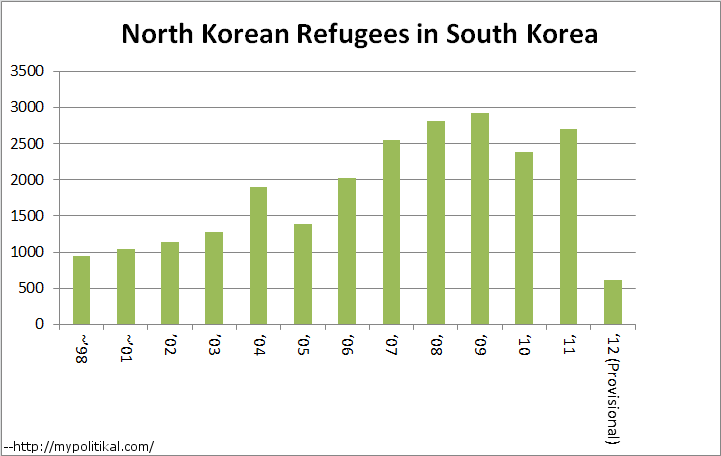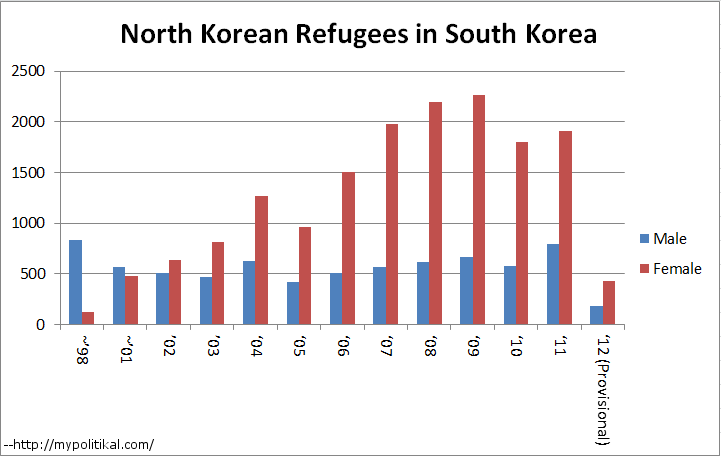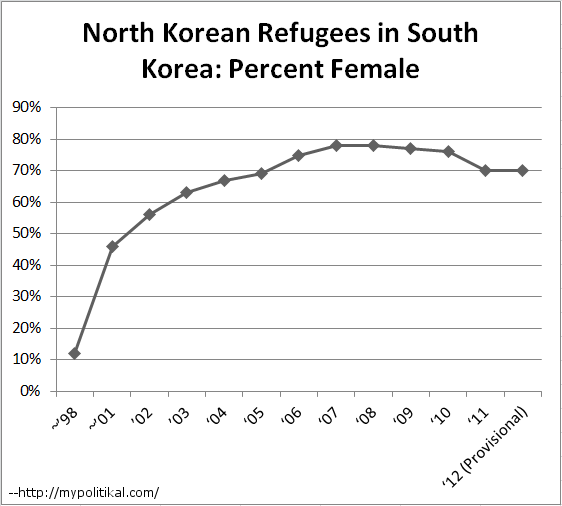By: inoljt, http://mypolitikal.com/
In the past decade an interesting phenomenon has occurred in South Korea: a small but steady flow of refugees from the northern end of the peninsula.
Here’s a graph:
More below.
These numbers can be found at the website for the South Korean Ministry of Unification (an English version can be found here). Interestingly, Wikipedia has a graph of the number of refugees before 2001 – although it doesn’t state the source.
Why this has occurred would be the subject of a fascinating study. Life in North Korea is better than it was during the early 1990s, when the country suffered a famine. Yet the flow of refugees in the early 1990s was practically non-existent. Perhaps the fact that South Korea is now a First World country has something to do with it. Perhaps North Koreans just didn’t think about fleeing to South Korea until the first few people started doing it, and then started telling their family and friends back home. It’s also worth noting that South Korea isn’t the only place with North Korea refugees; China has about an equal or greater number.
As more North Korean refugees enter South Korea, their nature has changed drastically. Previously, the vast majority of refugees were male. Now, however, the vast majority of them are female:
The female-male ratio of North Korean refugees increased steadily from 1998 to 2008, when there were 3.59 North Korean females for every North Korean male. Since then the ratio has fallen to about 2.40 females per male refugee, as of 2012.
Actually, the number of male North Korean defectors has basically remained unchanged throughout the past decade. It’s the number of female defectors which have skyrocketed.
Here’s a graph showing this in more detail:
It’s a mystery why two to three North Korean females enter South Korea for every male North Korean. It’s equally a mystery how this gender imbalance affects the North Korean community in South Korea. Nobody, at least in the English-speaking world, is talking about this phenomenon or even aware of it. Migration does not necessarily have to be female-heavy; more often it’s the males who do the migrating. Mexican immigration to the United States, for instance, is tilted to the male side.
P.S. A table of North Korean defectors in South Korea as of July 2012 can be found below:
| Year | Male | Female | Total | Female Ratio |
| ~1998 | 829 | 118 | 947 | 12% |
| ~2001 | 563 | 480 | 1,043 | 46% |
| 2002 | 506 | 632 | 1,138 | 56% |
| 2003 | 469 | 812 | 1,281 | 63% |
| 2004 | 626 | 1,268 | 1,894 | 67% |
| 2005 | 423 | 960 | 1,383 | 69% |
| 2006 | 509 | 1,509 | 2,018 | 75% |
| 2007 | 570 | 1,974 | 2,544 | 78% |
| 2008 | 612 | 2,197 | 2,809 | 78% |
| 2009 | 666 | 2,261 | 2,927 | 77% |
| 2010 | 579 | 1,800 | 2,379 | 76% |
| 2011 | 798 | 1,908 | 2,706 | 71% |
| 2012 (Provisional) | 179 | 431 | 610 | 71% |
| Accumulated | 7,347 | 16,358 | 23,705 | 69% |


